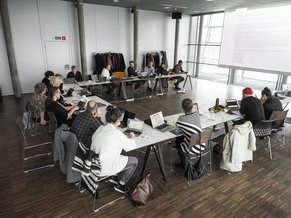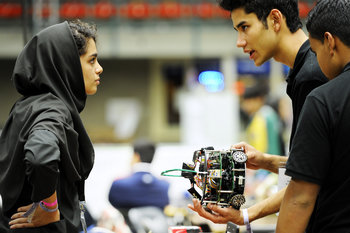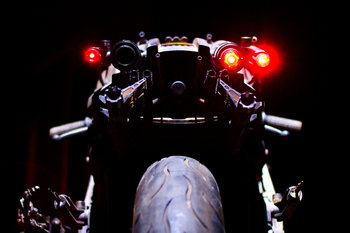
Technology | Example of Disruptive Effect |
The wheel | Completely changed history with impact on transportation and the movement of goods. |
The plow | Transformed agriculture and allowed for larger human populations. |
The stirrup | Transportation and military power based on horses. Changed history by creating power imbalances. |
Coins and later paper money | Greatly increased commerce. Largely displaced inefficient commodity currencies such as sacks of rice. |
Printing press | Communication, politics and culture. |
The compass | Navigation, contributed to global discovery, trade and imperialism. Contributed to the spread of technology and knowledge on a global basis. |
The clock | Society, economics and culture. Allowed for more precise coordination and cooperation. |
Gunpowder | Transformed warfare, politics and history by creating vast power differences. |
Steam engine | Transportation and manufacturing. A basis for the industrial revolution. |
Factory automation such as the spinning jenny | Helped to create the industrial revolution that greatly increased standard of living in several nations. Changed the labor market creating something of a panic. |
Railroads | Transformed societies, economies and cultures by allowing vast regions to be interconnected with efficient transportation. |
Camera | Represented a threat to art which survived. Changed media such as newspapers. |
Electricity generators, grids and related technologies such as electrical lighting. | Created the modern world as we know it. Greatly transformed lifestyles, economics and culture. Opened up the night and changed sleeping habits. |
Telegraph | Communication, industry and society. |
Telephone | Communication, culture, contributed to globalization by expanding the ability to communicate instantly. |
Phonograph & Gramophone | Sheet music, playing piano at home as entertainment. Created the first mass market for musical recordings. Transformed lifestyles and stimulated the imagination. Created the modern music industry. |
Radio | The first true mass media that centralized communication with a profound influence on culture. |
Motion pictures | Storytelling, culture and communication. Films had a profound impact on the development of ideas and language. |
Cars | Horses, transformed cities and changed lifestyles. |
Production lines | Production lines and related innovations such as the specialization of labor and interchangeable parts created a vast economic boom and the industrial economy of the 20th century. |
Refrigerator | Lifestyles, food safety and the food industry. |
Airplanes | Travel, business, ocean liners and rail. Contributed to globalization. |
Television | Lifestyles, society and communication. Synchronized culture around entertainment produced by a relatively small number of media companies. |
Petrochemicals | A vast number of chemical products at low cost that transformed industry, economics, consumption and the environment. |
Plastic | Transformed the cost and design of an incredible array of products. Was the basis for other disruptive technologies such as VCR tapes. |
Nuclear weapons | Greatly influenced politics and warfare by making a large conflict between superpowers unthinkable. Represented the first global existential risk controlled by humans. |
Credit cards | Greatly increased commerce, travel and globalization. |
Personal computers | Disrupted mainframes and enterprise software with a long term shift known as consumerization whereby firms started using more hardware and software designed for consumers. Partially democratized access to computing. |
Printers | In combination with personal computers, this disrupted the typewriter. |
DNA sequencing | Science, biology and medicine. |
Gene editing | Biotechnology, agriculture, food and medicine. |
Mobile phone | Landlines, culture and work. |
Digital cameras | Cameras, film and film processing. Allowed photos to be taken a zero cost thus changing culture. |
Internet | Industries, organizations, culture and way of life on global basis. |
Internet search | Research methods, information habits and access to information. |
Email | Mail, telephones and paper based office processes such as memos. |
Ecommerce | Retail |
Digital music | CDs, music shops and the music industry. |
Social media | Societies, politics, social processes, culture, media industries and marketing. |
Smartphones | Thinking, behavior, social processes and communication. Democratized media and internet access on a global basis. |
GPS | Paper maps and navigation. |
Cloud computing | Hardware, software and data storage practices. Allowed small companies to scale resulting in disruption to most industries. This is ongoing. |
Streaming media | Television, cable television, movie theaters, entertainment industry and music industry. |
Electric cars | The internal combustion engine. |
3D printing | Potential to disrupt manufacturing. |
Virtual reality and augmented reality | Real world experiences, working environments and interactions. |
Artificial intelligence and machine learning | In progress, likely to disrupt most industries and professions. Hopefully, as a tool for humans to use. |
Drones | In progress, likely to be involved in many industries such as agriculture. Militarized. |
Robotics | In progress, likely to be involved in every industry. Likely to be militarized. |



























